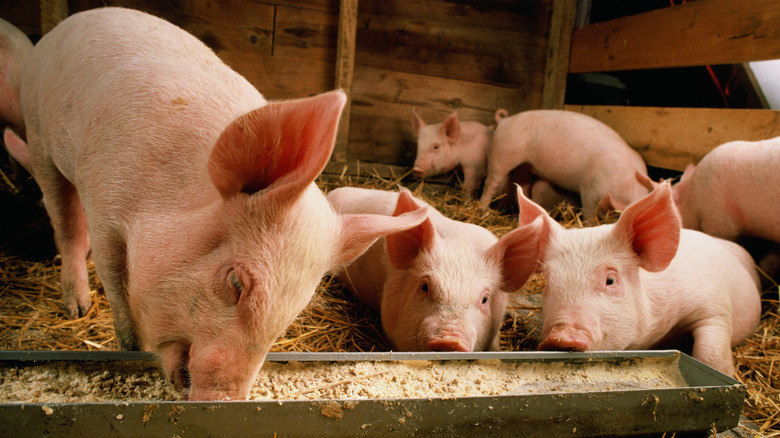AI 'Slop' Is Taking Over Social Media – Here's What You Can Do To Avoid It
One of the consequences of the fast-moving evolution of technology is that we have to come up with new names to describe things. Tech companies and marketers will provide brand and feature names, but it's often up to users to define the downsides. Take the word 'spam.' This name for bulk unsolicited messages started as a joke, inspired by a Monty Python sketch, but it caught on worldwide because we all knew what spam was when we saw it. Now, there's another equally useful term: 'slop.'
Slop refers to low-quality, AI-generated text and images created to harvest clicks and likes on social media. The name fits well. It's a punchy, short word that's thematically similar to 'spam.' Its original meaning of 'inedible food watered down and fed to pigs' works as an effective — if somewhat harsh — metaphor.
It exists seemingly for no purpose, clogging up Facebook and X feeds, usually generated by accounts with generic names producing dozens, if not hundreds, of AI-generated images every day. There are numerous YouTube tutorials that explain how to produce slop using AI prompts. Its creators are effectively gaming social media and earning money from engagement through sites' content monetization schemes. Social Media sites need footfall to attract advertisers, and this has paved the way for the AI slop industry.
How widespread is slop?
A study from Stanford and Georgetown University researchers found that posts from accounts users don't follow that were still recommended by the Facebook algorithm increased from 8% in 2021 to 24% in 2023. At an NVIDIA conference in June 2024, Mark Zuckerberg suggested that AI-generated content on feeds will increase in the future.
Popular slop topics include fictional news stories about famines, natural disasters, or other tragedies. A famous example was a picture of a little girl and a puppy in a boat supposedly fleeing Hurricane Helene that was reposted on X by Amy Kremer, a Committeewoman for the Republican National Convention who left her post up even when numerous people explained that the image was AI-generated. Another popular slop theme involves fabricated news stories about Elon Musk, often crediting him with philanthropic gestures he has not made or scientific breakthroughs that haven't happened.
A lot of it is unpleasant. Distressing content gets more engagement, so those producing slop often post pictures of starving people, sick children, natural disasters, or abused animals. The YouTube videos that teach people how to make money from Facebook actively encourage people to create this sort of content. The Stanford and Georgetown study analyzed 120 Facebook pages that posted multiple AI-generated images and found that many users engaged with AI images as if they were real.
Why is AI slop a problem?
Slop isn't usually trying to scam people out of their money. Its creators just want likes and comments. However, it's still very problematic. There have already been AI horror stories about deepfakes and libel cases, and although most slop doesn't have a financial or political motivation, it's still often trying to pass off untrue content as something factual. As more AI content floods users' newsfeeds, people struggle to distinguish real news from slop. A genuine photo of cars piled up in the street after catastrophic floods in Spain was dismissed by some commenters on X as being AI-generated "fake news."
Slop crowds the Internet with empty noise, making it harder to connect with real people or find real news on social media sites. There's also the problem of recursive training. This is where AI systems are trained on datasets that increasingly include material that's also AI-generated. This feedback loop leads to more homogenized outputs and a greater chance of errors and biases. The sheer number of low-quality images from slop accounts is likely to speed up this process.
And let's not forget the environmental impact of all of this unnecessary and unwanted content. AI deep learning models consume large amounts of energy and water and produce carbon emissions. One study found that producing 1,000 AI images was roughly equivalent to driving four miles in a gasoline-powered car.
How to avoid AI slop
Every time you like or comment on a post, the algorithm registers it as a success. Even if your comment says that it's appallingly written, derivative, or downright wrong, the numbers show social engagement. So the main advice, if you keep seeing AI slop on your social media feeds, is just to ignore it.
You can also block or report accounts. This might be time-consuming if you're seeing a lot of slop posts. On Facebook, you can click the three dots to the right of a post to hide, report, or block it. Options under 'report post' include 'sharing false information or spam' and 'I don't want to see this,' which covers even non-malicious slop options. Similarly, on X, you can select the three dots at the top right of a post and select block, report, or 'not interested.'
Importantly, you can also show support for genuine creators whose content you enjoy by liking, commenting, or sharing posts. Doing this should encourage the behind-the-scenes algorithms to show you interesting and engaging content created by actual humans.



